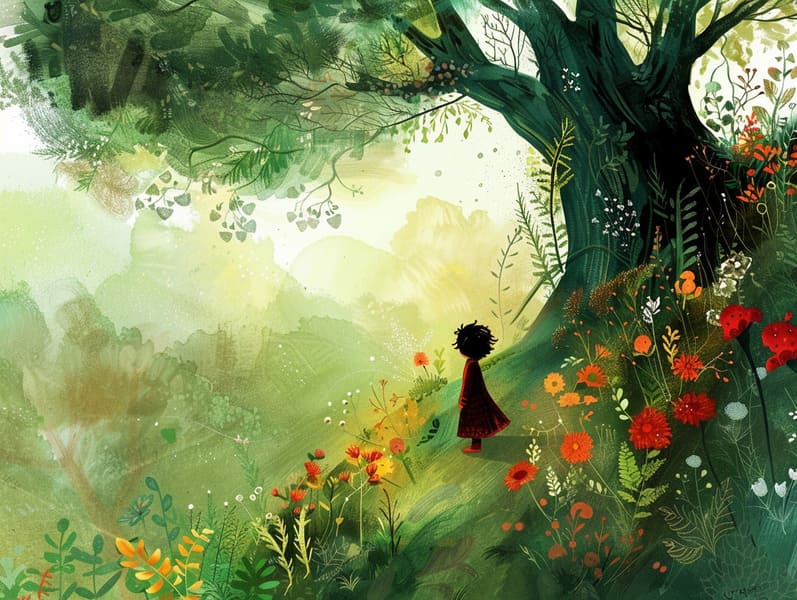The Formation of Best Fairy Tales and the Unchanging Delight.
The Formation of Best Fairy Tales and the Unchanging Delight.
Blog Article

Legendary fairy tales have timeless appeal. These stories have been relayed from one generation to the next millennia before they were ever inscribed. They developed from a variety of societies, including Middle Eastern traditions. They were initially narrated among elders, often carrying themes and messages pertaining to the societal norms and beliefs of the time.
Jacob and Wilhelm Grimm, Jacob and Wilhelm (the Grimm brothers), were among the first to compile and publish many of these beloved narratives. Their volume, "Grimm's Fairy Tales," included narratives like "Ashenputtel," "The Story of Hansel and Gretel," and "Schneewittchen," which have since become cornerstones in the world of iconic fairy tales. Similarly, Hans Andersen's fanciful tales, such as "The Sea Maid," and "The Story of the Ugly Duckling," have touched hearts worldwide, securing their place in the pantheon of timeless fairy tales.
Though they are old, these stories remain as significant as ever, especially as kids' bedtime tales. These enchanting tales are now available in multiple formats, including colorful picture books, fantastical animations, and online fairy tales.
Their continued relevance can be ascribed to several fascinating points:
Important Morals: Traditional fairy tales often illustrate important moral lessons. Fairy tales like "The Boy Who Cried Wolf" teach the significance of truthfulness, while "The Tortoise and the Hare" point out the qualities of tenacity and unassuming nature. These narratives offer young ones clear distinctions between moral and immoral, building their moral compass in a mild yet meaningful way.
Empathy and Awareness: Fairy tales frequently involve characters facing challenges and struggles, inspiring readers to comprehend with their struggles and celebrate their triumphs. For instance, "The Story of Beauty and the Beast" emphasizes the merit of seeing beyond looks to perceive the inner spirit of a individual, encouraging insight and insight.
Cultural Understanding: Many fairy tales are steeped in the cultural contexts from which they bloomed. Immersing in these fairy tales can provide fascinating glimpses into different beliefs, cultivating a sense of world insight and acknowledgment.
Inventiveness and Fantasy: The supernatural elements in fairy tales—wizardry and magic—provoke children’s dreaming abilities. These fairy tales take readers to supernatural realms, promoting imaginative ideas and a sense of marvel that lasts a lifetime.
Traditional fairy tales are not only fascinating but also educational. They work as alluring tools in building various cognitive and affective skills in children. When old fairy tales are spoken, they promote verbal skills by presenting new terms and meanings and sophisticated sentence structures. This practice also improves hearing abilities and attention span, as young readers concentrate deeply, prepared to see what happens next.
Furthermore, analyzing the themes and characters of old fairy tales can cultivate logical thinking and critical thinking. Kids are educated to identify patterns, foresee events, and understand cause and effect. These analyses also ease young readers convey their thoughts and feelings, enhancing their emotional intelligence.
In today’s digital age, the proliferation of online storybooks has made these narratives more accessible than ever. Web-based platforms and mobile apps extend wide arrays of classic fairy tales that can be explored or heard anytime, anywhere. Fairy tales recited are particularly popular, offering an entertaining method for young readers to take part in these alluring stories. Narrated books and spoken videos take characters and settings to life, often supplemented by spellbinding soundtracks and melodies that improve the storytelling experience.
The timeless appeal of classic fairy tales lies in their ability to modify to new eras while staying true to their fundamental ideas. Contemporary retellings of these stories often include more varied characters and modern settings, making them understandable to today’s audience. However, the underlying themes of braveness, charity, and even-handedness remain unchanged, continuing to affect children of all ages.
Classic fairy tales also offer a sense of assurance and knownness. They extend a structured narrative with a clear beginning, middle, and end, often wrapping up with the wrap-up of conflicts and the triumph of virtue over vice. This regularity can be reassuring for young ones, yielding a sense of steadiness in an variable world.
Old fairy tales continue to fascinate and edify new generations, maintaining their radiance and value in modern society. As children's night stories, they grant access to a perfect blend of fantasy and learning, promoting moral values, empathy, and creativity. The presence of digital fairy tales and the favor of fairy tales spoken ensure website that these traditional narratives remain obtainable to new generations.
By sustaining and communicating these tales, we continue to appreciate the rich tapestry of lore and cultural heritage. Whether you are enjoying a colorful picture book, browsing a cyber collection, or listening to an sound book, the appeal of famous fairy tales is always within reach. These fairy tales convey of the unwavering nature of narratives and its ability to tie us across generations and cultures.
Even if you are seeing a vividly illustrated book, perusing a electronic collection, or listening on an audio story, the fascination of timeless fairy tales is always within reach.
These fairy tales point out of the steadfast essence of fairy tales and its ability to hold us together across time and space, forming a connection that fascinates and enlightens alike.